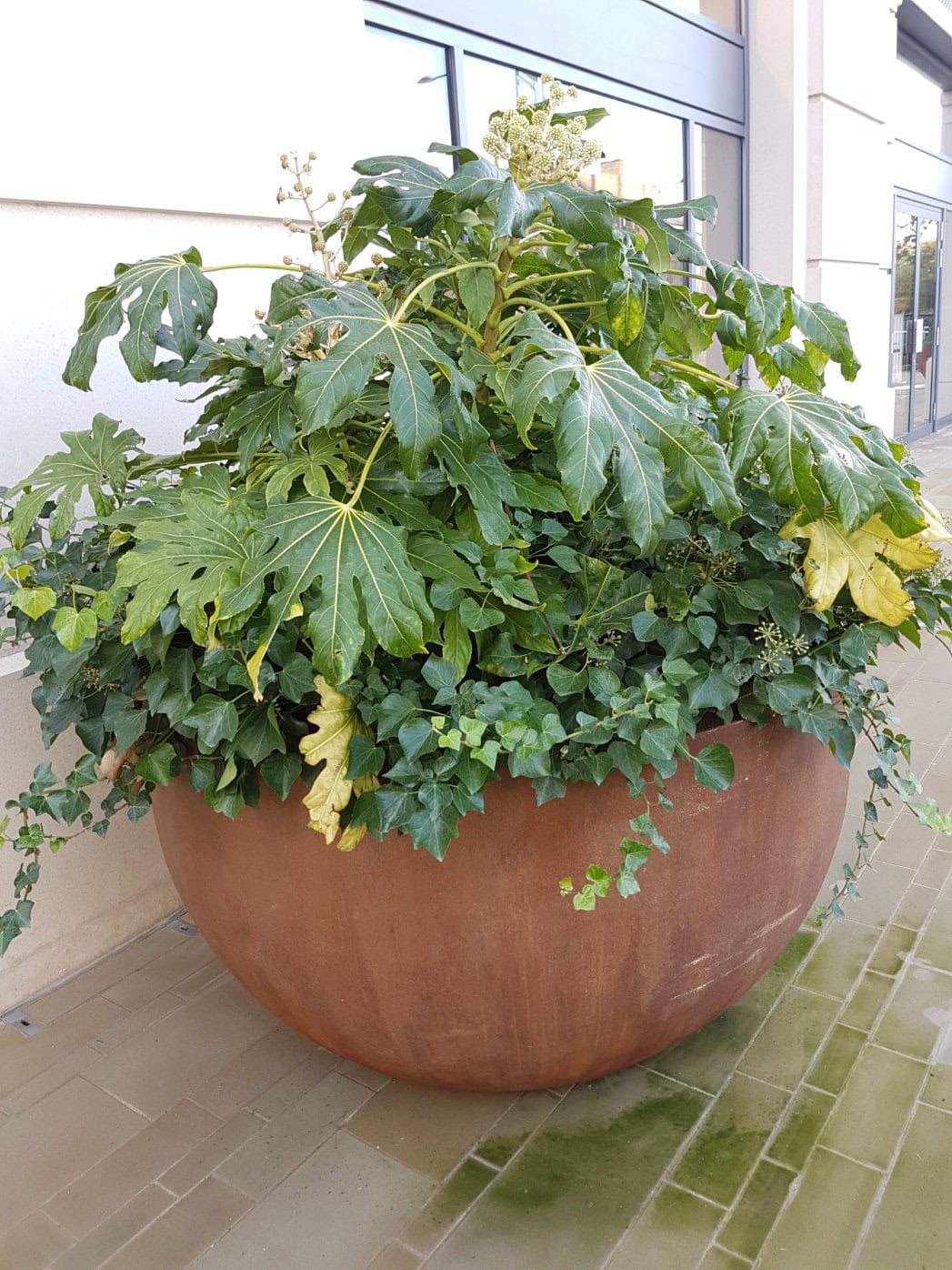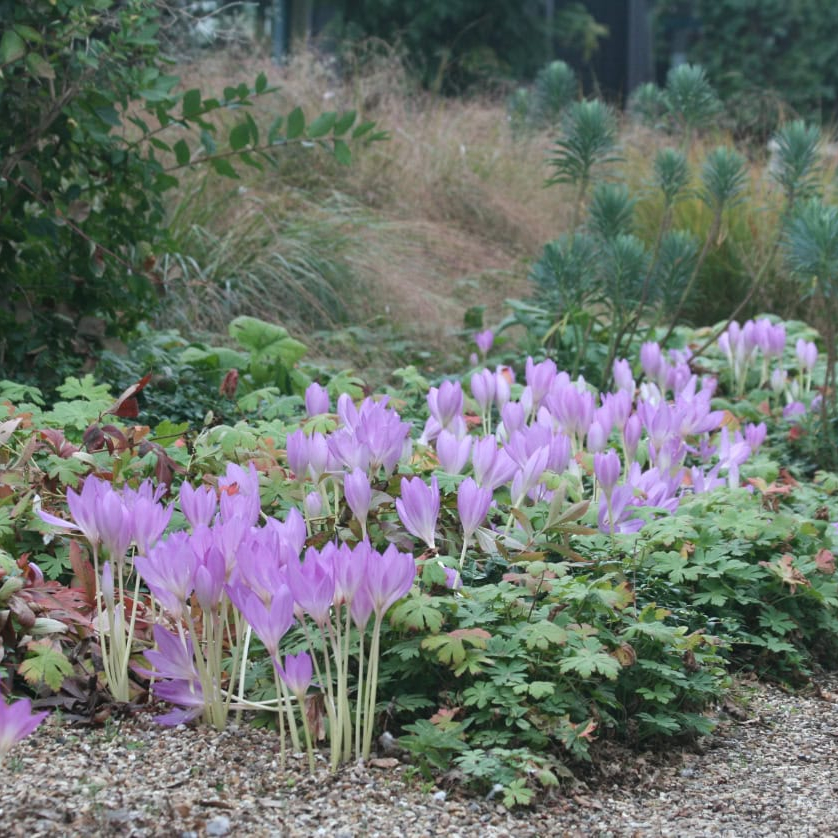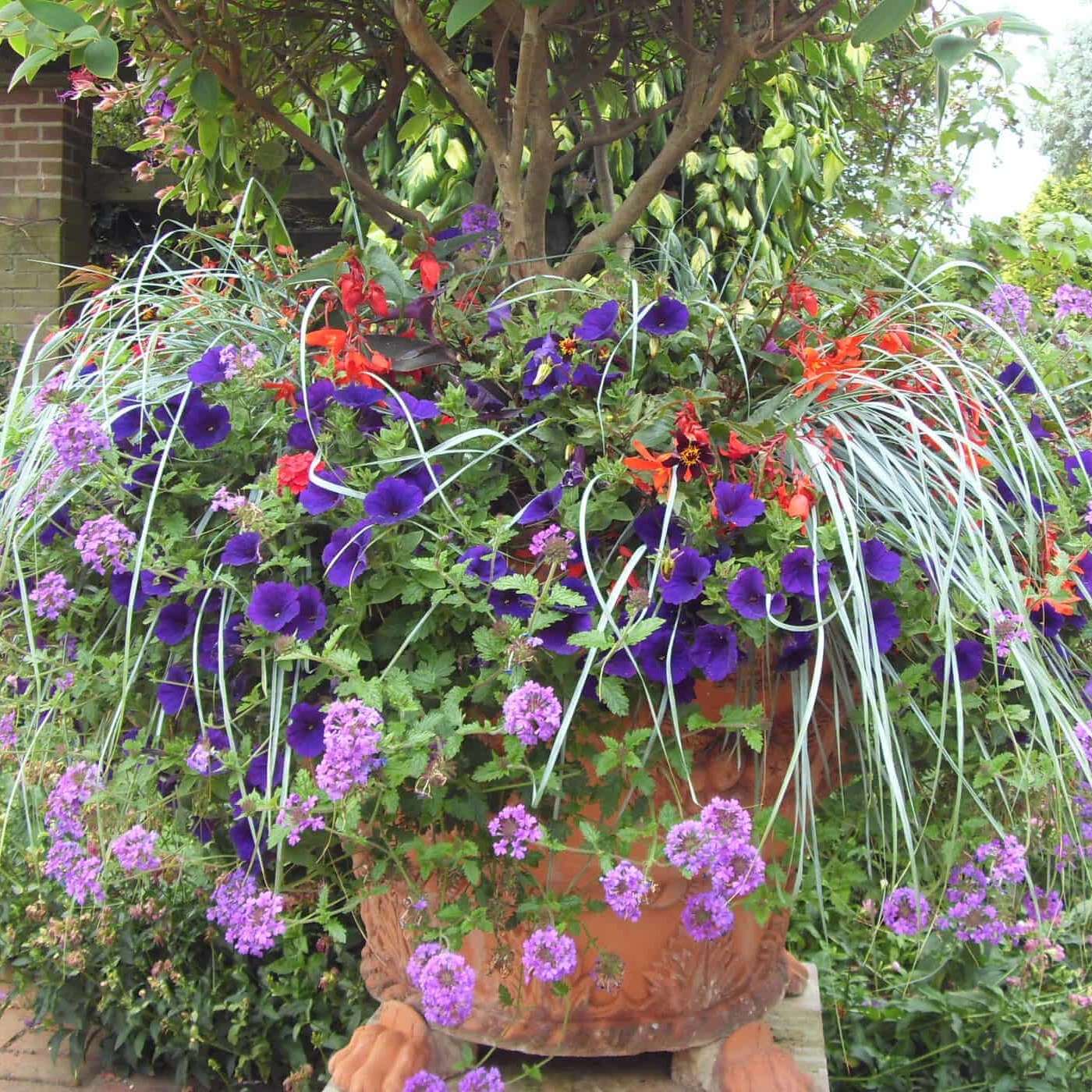In a pot or in the ground? Part 3: How to make a resilient container garden
This is the last of three blogs exploring planting and growing options in areas of hard landscape. In the first blog we explored the reasons why container gardens are on the rise despite this approach being riddled with pitfalls, and then in the second blog ways of creating planting pockets in hard landscape without the need for pots. In this last of the series, we explore how to make a resilient container garden, for people who have busy lives. By this we mean, how to create long-term, resilient, maintainable and beautiful container gardens and potted displays that will thrive on a moderate amount of neglect. Because let’s face it, all pots get neglected at some point. Gardens are for joy and stress-relief, so let’s make sure our potted displays aren’t prone to looking miserable and raising our heart rate for the wrong reasons.
Siting and positioning
This may not have been the first thing you’d consider, but it’s actually one of the most important factors, in two ways.
Ease of care
Firstly, as containers are more fussy than plants in the ground, for reasons discussed previously, placing them somewhere where you both a) pass by frequently and b) can easily grab a watering can, will help make sure they get the attention they need when they most need it. A pot positioned far out of reach of a watering can or a hose will be a dry pot and a sad plant, no matter your good intentions. Pots by your door will be better tended than those hidden away down the garden.
Wind and shade
Secondly, pots in exposed windy and sunny conditions will dry out far quicker than in semi-shade sheltered from the wind. This is especially true for evergreens and large leaf plants. With the plants raised up from the ground, the increase in wind rock and drying is significant, plus damage to leaves and risk of pots tipping over.

Container choice
Size and shape
Generally, bigger is better, especially if you want to grow leafy shrubs, trees and herbaceous perennials, or even bedding plants. Bigger means more water storage and root-run, less vulnerable to extremes of heat and drought stress. However if you want smaller containers, you can just choose appropriate plants, as explained later. You can also think beyond containers and consider creating raised beds. These may be huge tanks and tubs, or constructed from the ground up.
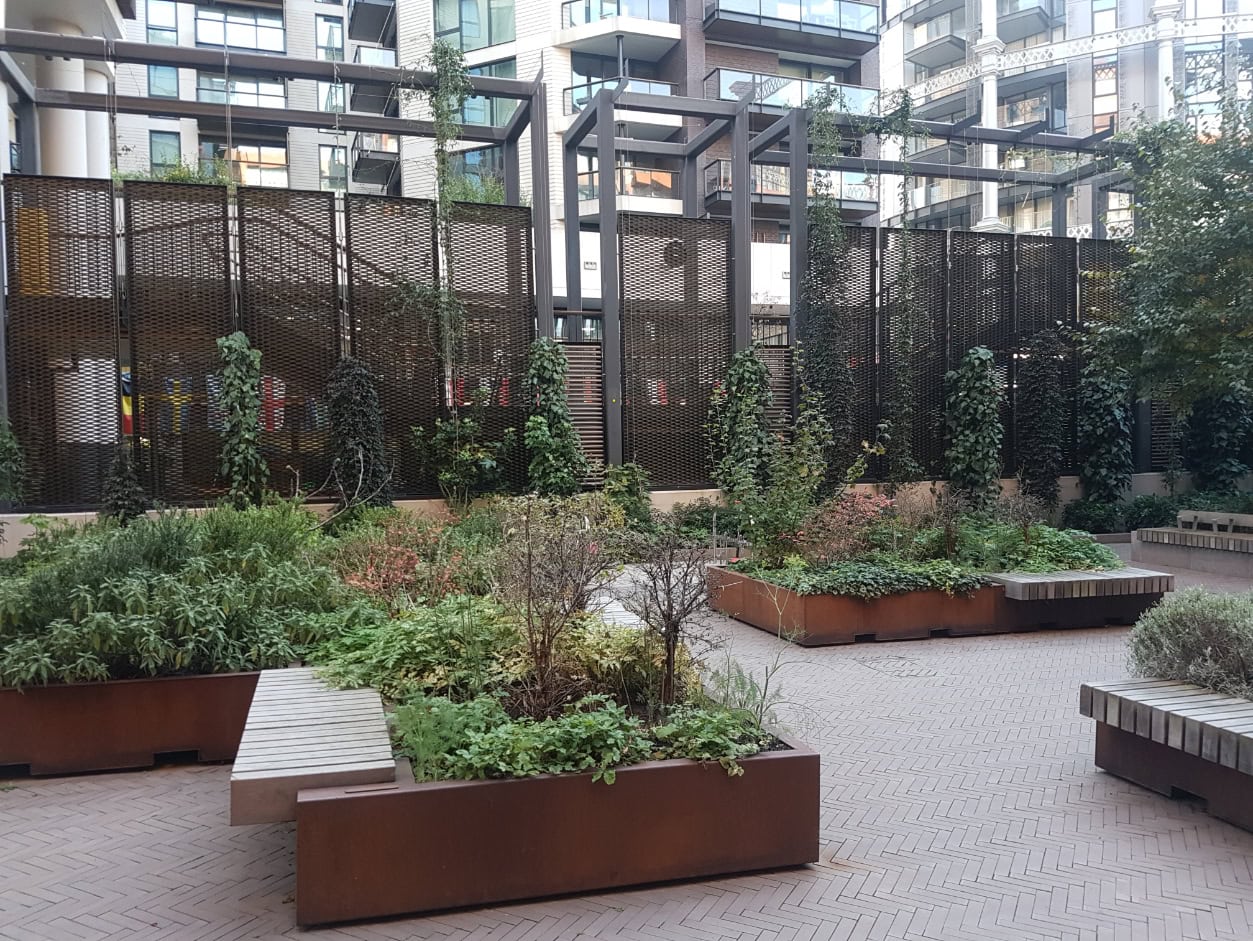
Porosity
Monty Don may have a lovely collection of terracotta pots. However these are porous, meaning water evaporates through the pot walls, drying the root-ball even quicker. Water is lost directly through the wall of porous clay containers. Research has found the water loss from clay pots is about double that of plastic containers. For things like cacti and succulents that need good root aeration, clay pots may be the best choice. But for plants needing more water, choosing a non-porous pot, or lining the clay pots with old plastic compost sacks is a good idea. Stone sealing products can also be used.
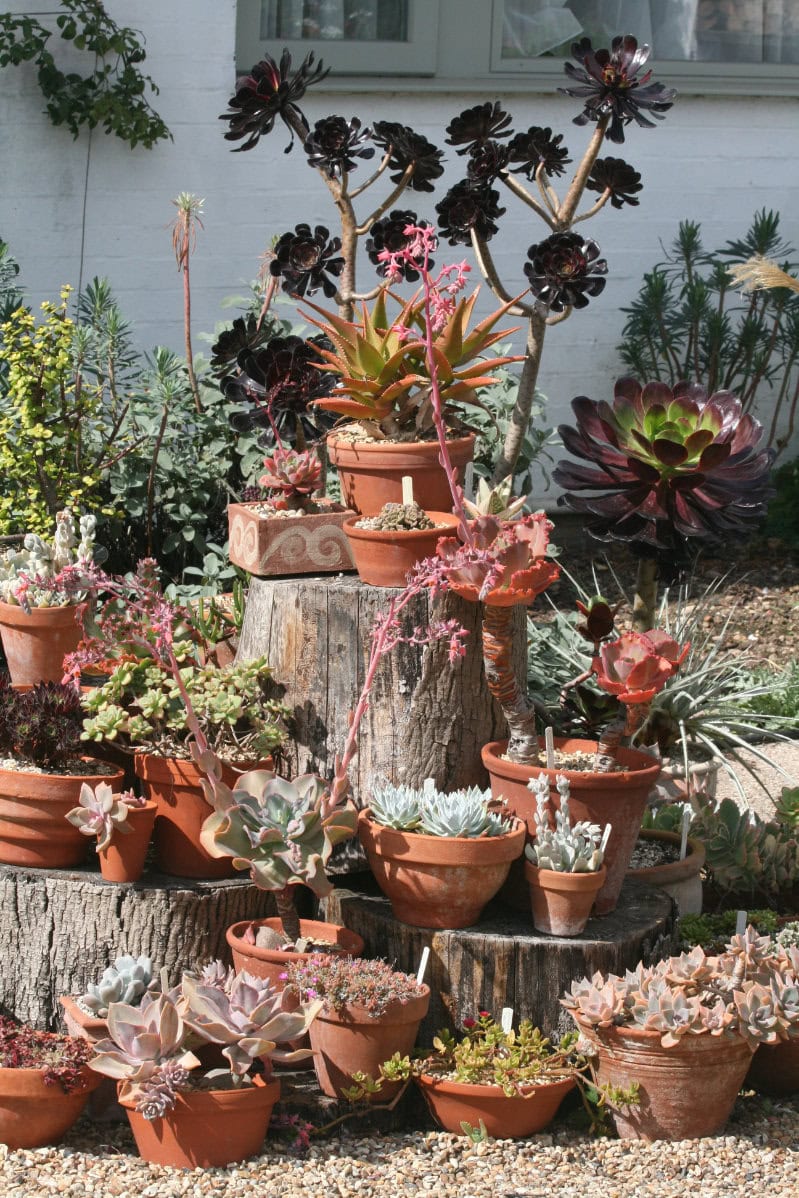
Soil
You may be tempted to just get a bag of multipurpose potting compost. However, these types of products are only formulated to provide one, maximum two years worth of performance. They are purely organic material, which means they will degrade over time and lose their ability to hold water, air and nutrients. As they degrade these composts also shrink considerably. And if you’re used to peat-based composts, the new peat-free mixes are broadly less easy to work with.
For long-term displays in a resilient container garden, a loam-based soil needs to be used. This means it contains a small amount of fine clay and silt minerals, which bind with the organic compost component to form a true soil. This means it can potentially hold up over many decades, with added feeds and compost mulches to keep the soil fed. Look for a John Innes No 3 product, or make your own with compost, mixed with garden soil, you can find recipes online. For mediterranean and alpine plants, you can also use pure sand with just a little compost added. Or even experiment with recycled aggregates.
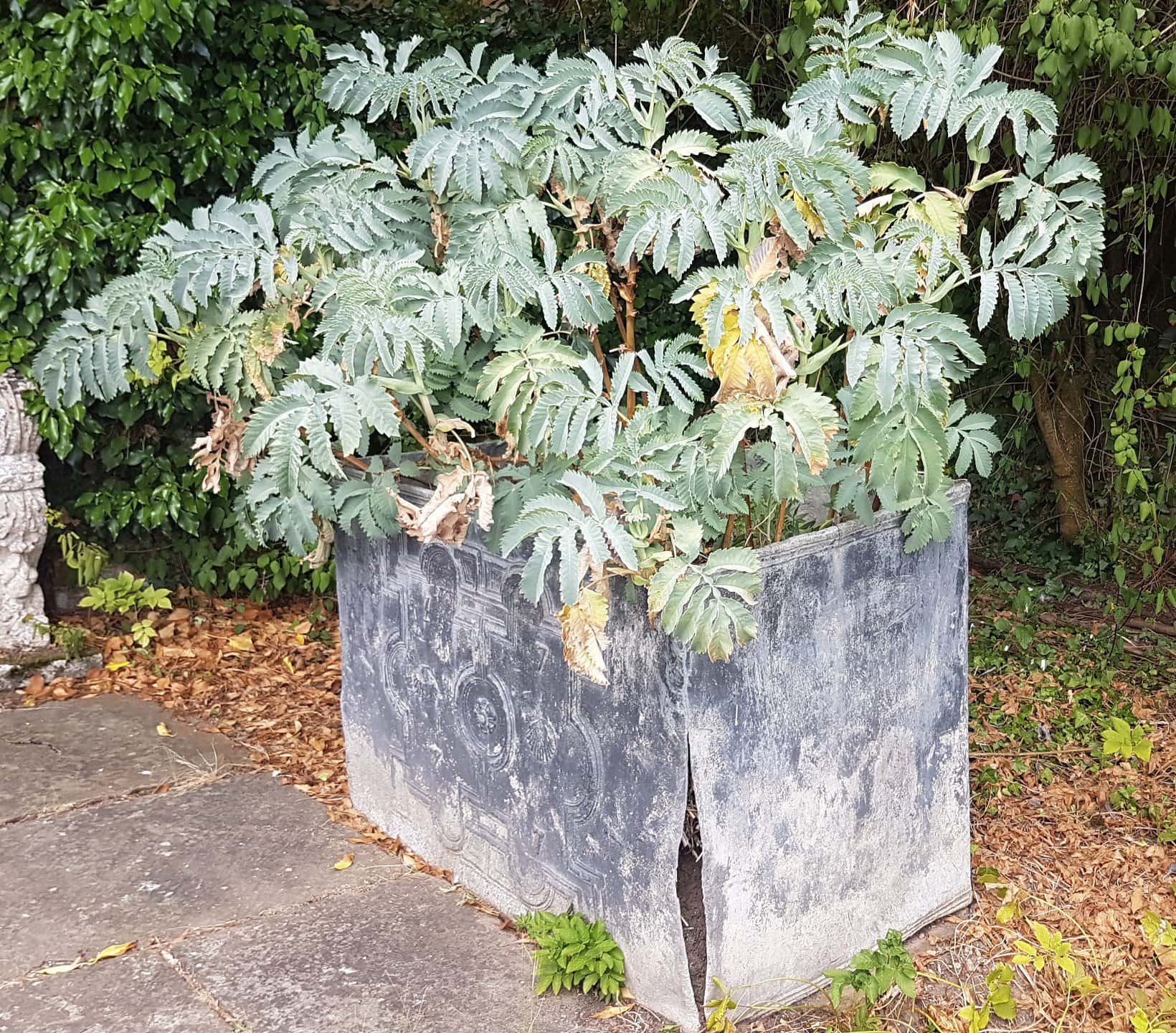
Mulch
Gravel mulches do more than just looking pretty. They insulate the soil from extremes of heat, cold and drying winds. A light coloured gravel will also help reflect sunlight, cooling the root ball and giving the plant some extra light from below, which succulents and alpines really appreciate. A good mulch 2-3 inches deep will help suppress weeds, but also block the flow of evaporative wicking of water from the soil into the air. Alternatively, to feed and boost the health of the soil, mulch with soil-improver or composted wood-chip.
Plants for resilient container gardens
Woody plants
Trees, shrubs, roses, they’re a huge and diverse category. Broadly speaking, woody plants are stress tolerators. In their wood, stems and roots, they hold energy that can see them through stressful times, to a varying degree. However, they are also unforgiving in that they hold the scars of stressful times gone by. For example, a bay tree subject to drought in a pot, may develop large cracks in the bark on the trunk. Or a tree growing for years with too little nutrients and water, will develop and sparse branch structure and canopy that screams neglect. Woody plants can work very well, but you usually need irrigation, large containers and a good level of attention and knowledge.
Fatsia japonica, underplanted with ivy. Two woody evergreens that do well in shade and have a good drought tolerance, suitable for a pot. Note the green algae growth on the paving beneath. As water and nutrients leach from the container this is a common issue. Placing the containers over a drain, or strategically aligned with one, can help.
Palms
Naturally adapted to hot dry conditions and thin soils, many mediterranean palms can do very well in containers. They will need feeding and benefit from consistent watering in summer, but the good thing is that they can generally cope with a few weeks of neglect. So you can go on holiday and not worry. Even if you just water a few times through summer to get them through the driest times, many palms will do most of their growth in spring and autumn when rains may provide enough water for the pots. Consider Chamaerops, Trachycarpus, and also the yuccas, which are not strictly palms, they’re actually asparagus relatives!
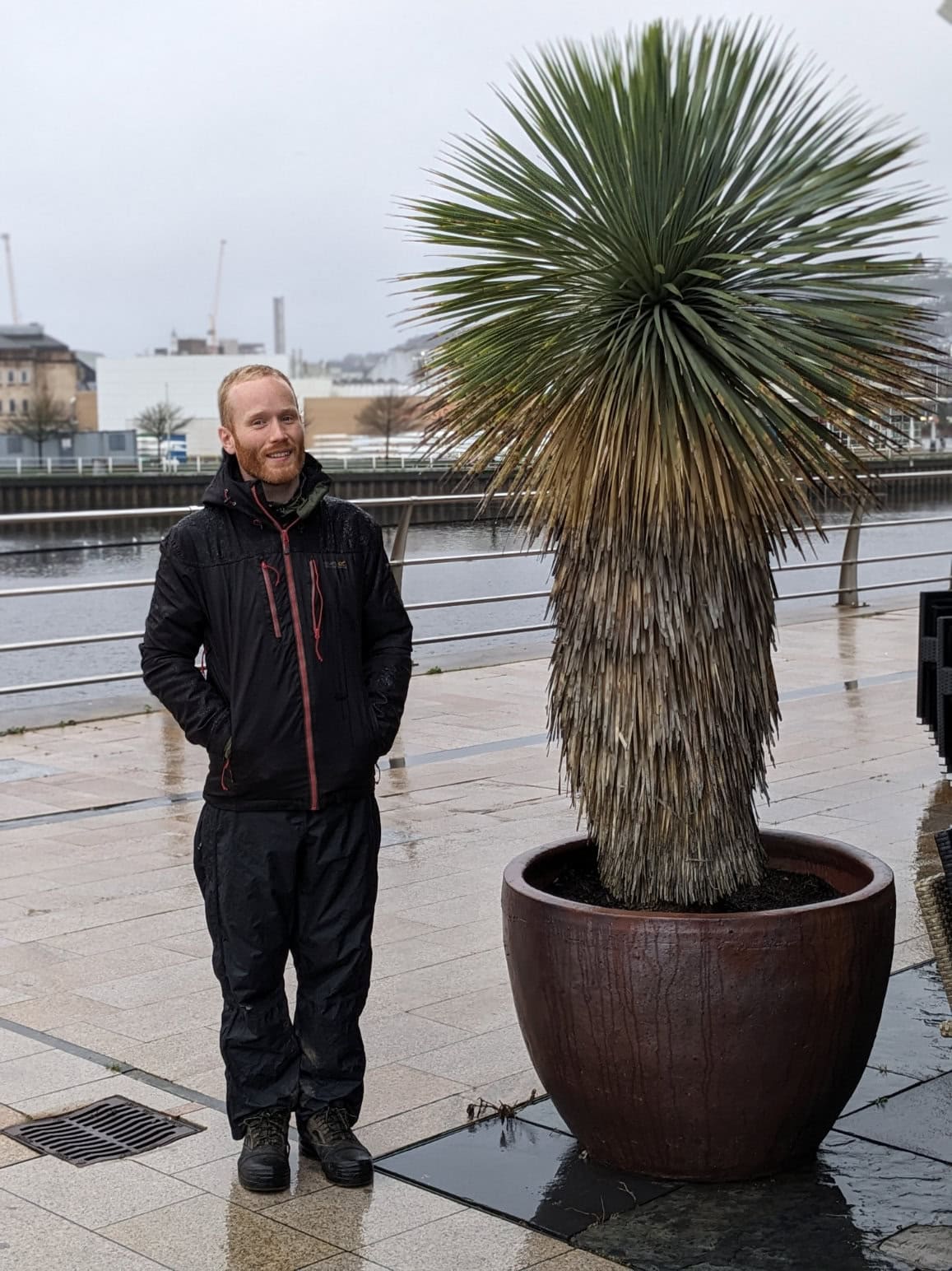
Perennials, grasses and bulbs
Again, a broad category. Choosing low-growing plants adapted to dry conditions is usually the way to go. Think sedges, mediterranean types of grasses and hellebores, agapanthus, dierama, with a long season of interest in evergreen foliage and seedheads. However, without an irrigation system for regular water in summer, most perennials will not look anywhere near as happy in a pot as they would in the ground. Bulbs, however, tend to work well in pots. Most are growing in winter and spring, or autumn, when drought stress is least likely. They tend to be dormant over the driest parts of summer, meaning they can be pretty dependable and undemanding, if you can work around the ugly foliage stage somehow.
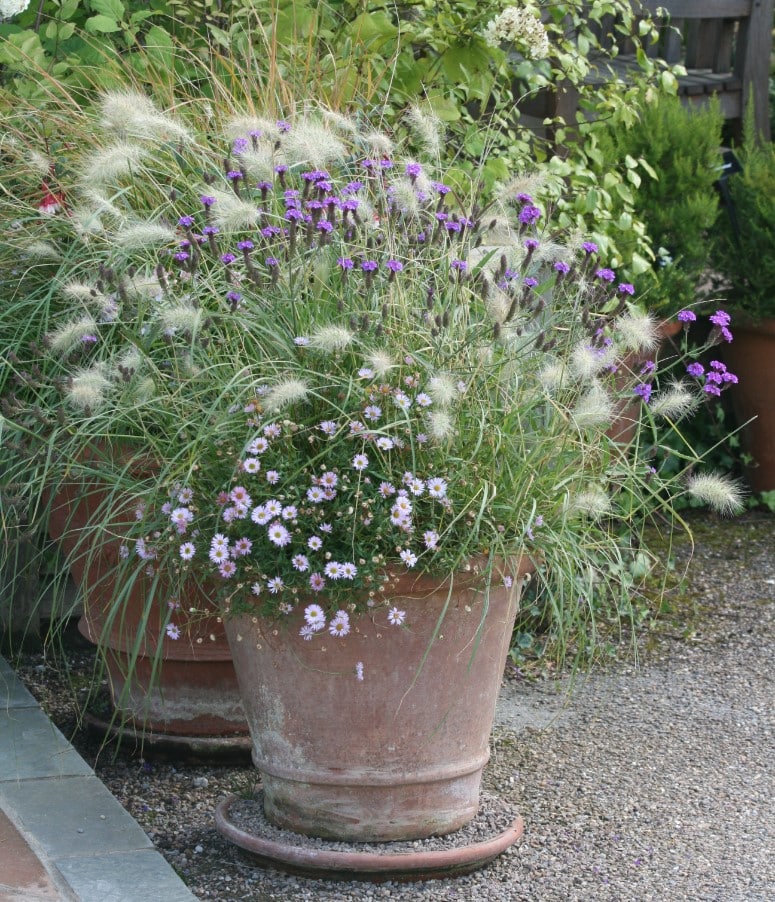
Tender perennials, annuals and bedding
You’ll see lots of cutesy pictures on instagram of people growing dahlias in pots. Trust me, don’t go there. These types of display require twice a day watering in summer, regular staking, feeding, deadheading and fresh soil annually. There are, however, more stress-free options. Pelargoniums (zonal geraniums) are a great choice. Tender succulents like aloe and echeveria, can also be really dazzling. However, you’ll need somewhere bright and frost-free indoors to overwinter them. In the mildest areas some of these can be grown outdoors year round, including aeoniums, agave and opuntia cacti. Nothing beats these for a minimal-maintenance wow-factor pot display.
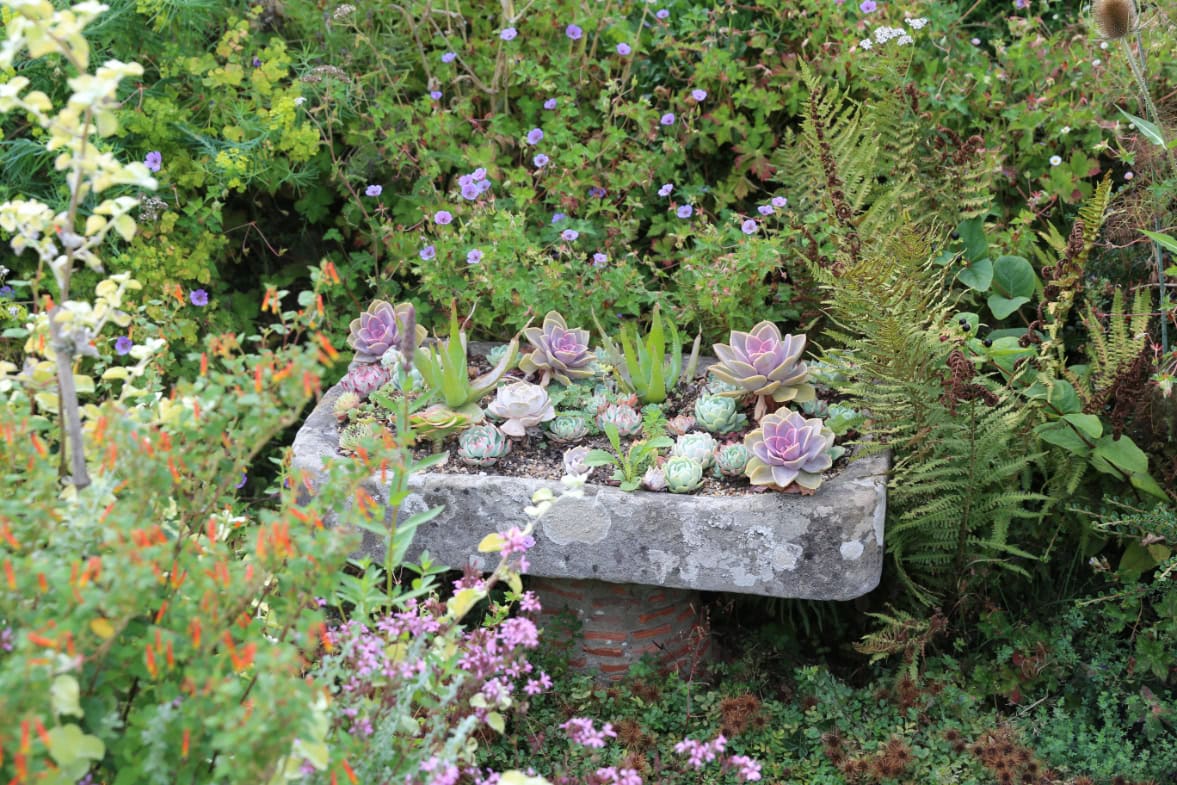
Hardy succulents and alpines
For the ultimate low-maintenance stress-free resilient container garden in full sun, this is where it is at. They may not give the biggest display, but what they lack in size they more than make up for in mesmerising foliage patterns and unbeatable resilience. There is a huge range of sempervivums to choose from, and the smaller stonecrops (sedums) can work well too. These even thrive in small containers. Sea-thrift (armeria) and saxifrages can make beautiful green cushions in even the most neglected pots too.

Water supply in resilient container gardens
Be honest with yourself, you’re not going to find the time to water your pots as often as they’d like it. If you don’t want to be restricted to succulents, and you do want to grow woody plants, a wider range of perennials or god forbid, dahlias, you’re going to need more than just a watering can.
Saucers
This low-tech approach is actually very effective for a resilient container garden. Once soil is dry it can become hydrophobic, meaning water runs through and off it without soaking in. Having containers in saucers means a small reservoir of water is held for longer. This prevents the soil from drying out and reaching a hydrophobic state. Plus, of course, it holds more water than the pot alone would have.
Water retention tanks
Water tanks sit within the pot, and carry similar benefits to a sauce, but hidden out of sight. Pour water down the pipe into the tank, and it will slowly wick from the tank up into the soil. Eventually the roots to find the reservoir. A common brand is the Mona ‘Plantsava’.
Downpipes
Placing containers under downpipes creates a containerised ‘rain garden’. While it will receive plenty of water, this will come in huge volumes during rain. The container will still being subject to drought if weeks go by without rain. Careful choice of substrate and plants is needed for this type of project. An overflow pipe is helpful for preventing excess water washing soil over the brim.
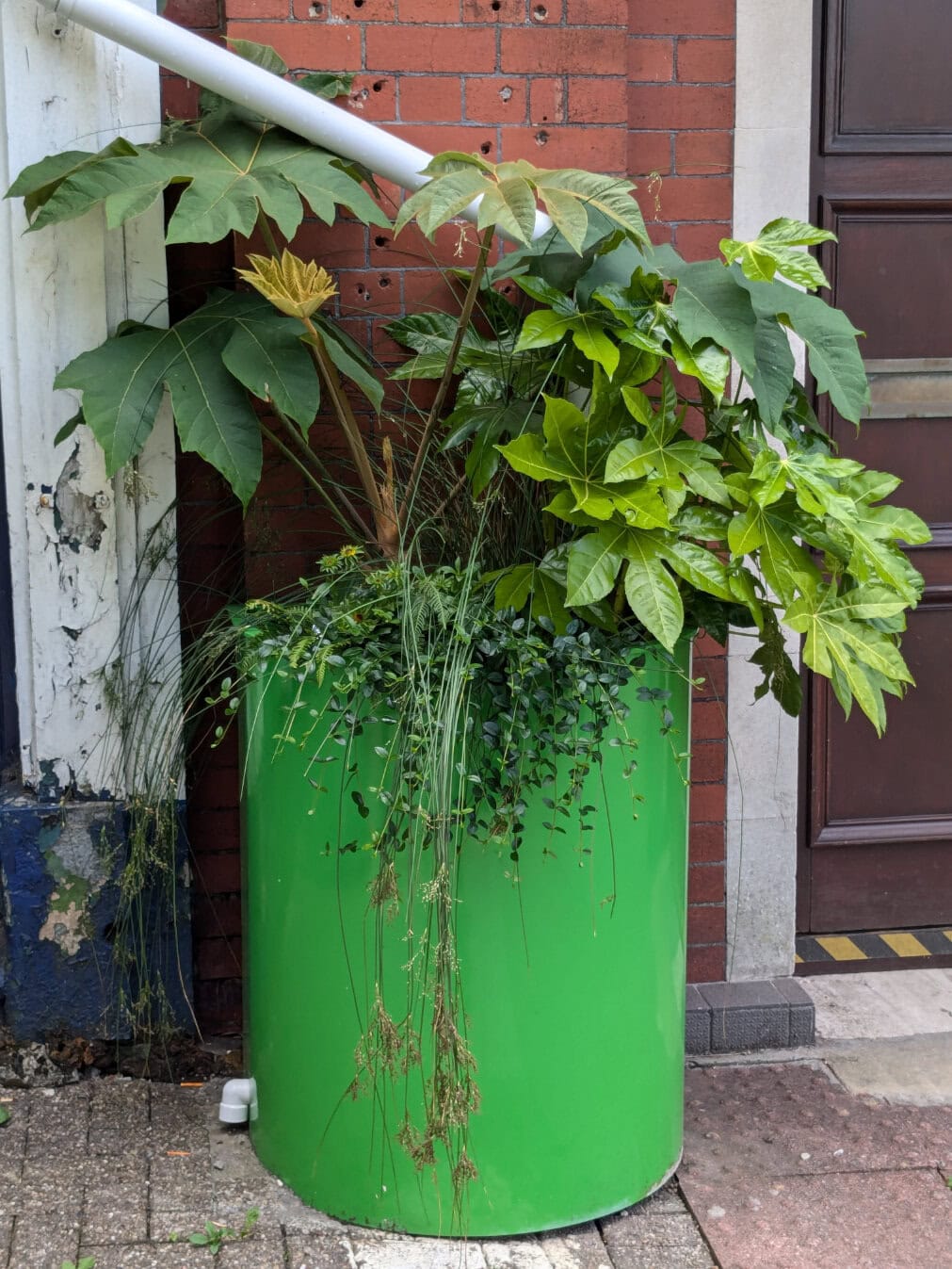
Irrigation
There’s lots to consider with irrigation, and the irrigation in itself becomes the source of stress and maintenance. Is it on? Is it off? Am I watering too much or too little? Is there a leak somewhere?! … you get my drift. The key thing is that you get a system that you can understand the settings of. Especially if it is automatic or set to a timer. Irrigation systems left on accidentally over winter can cause widespread plant deaths, so be careful. However, done right, irrigation systems really are the best option if you want to grow the widest range of plants and create a real sense of a garden.
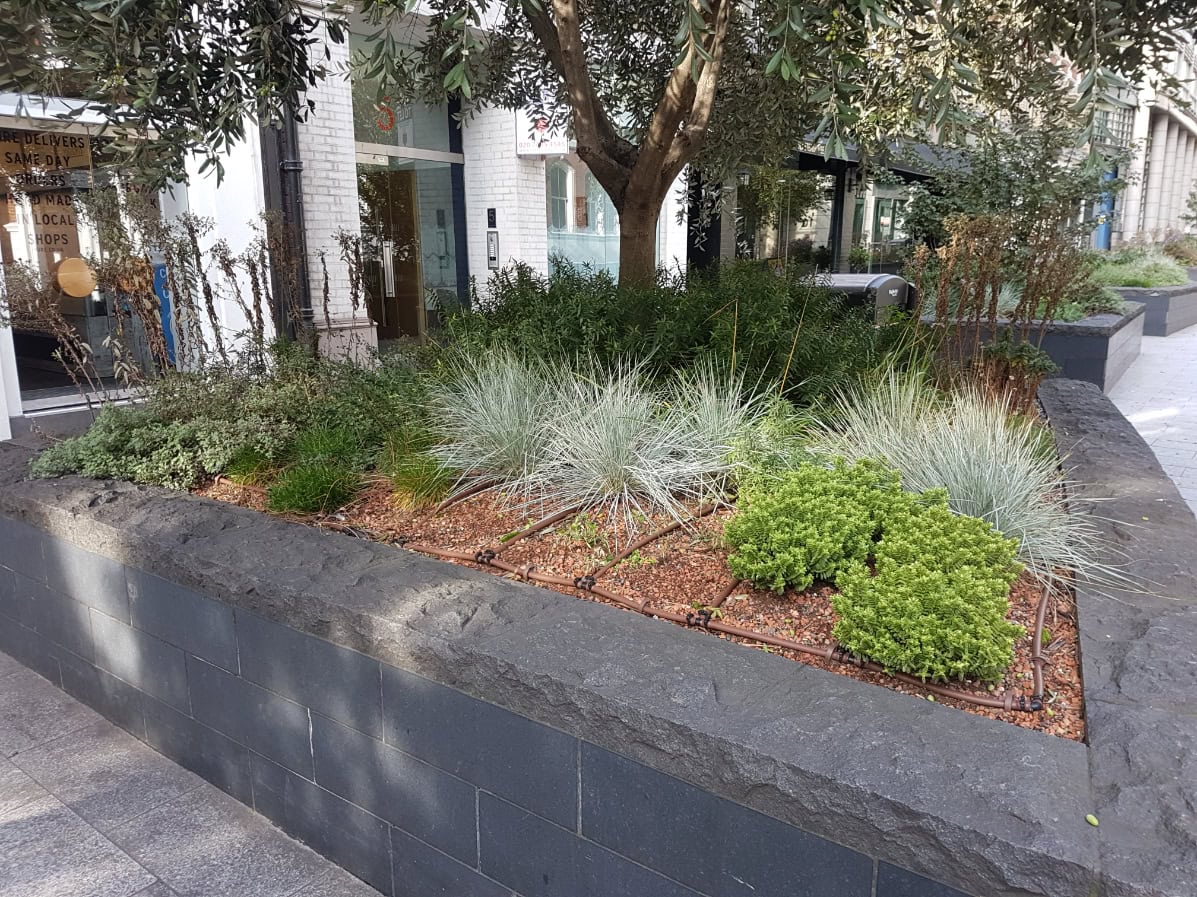
And so there it is, the end of our 3 blogs exploring how to green up areas of hard landscape with a resilient container garden. I hope you’re found this helpful in saving your time, money and energy, to successfully turn grey to green in a way that works for you.
Owen Hayman
Owen joined the Bestall & Co planting and aftercare team in spring 2019. He is an RHS qualified horticulturist, holding a full Level 3 Diploma in Horticulture, and recently came in the top 3 at the Northern Regional Final of The Young Horticulturist of the Year 2019. After first doing a foundation diploma in Fine Art, he went on to gain a degree and masters in Plant and Soil Science from the University of Sheffield in 2014. Owen worked as a researcher on various field research projects in Alaska, Panama and Borneo. When not away in the field, he became obsessed with visiting gardens and nurseries across the British Isles and the Netherlands, developing his own garden, and then taking on a walled allotment garden as a personal project. He realised his true passion was in horticulture, and so moved away from academia and into the world of specialist plant nurseries and professional gardening.
Owen is now studying the Wisley Diploma, but continues to write articles for us on a monthly basis, and we're delighted to maintain contact with such a passionate and knowledgable plantsman.

